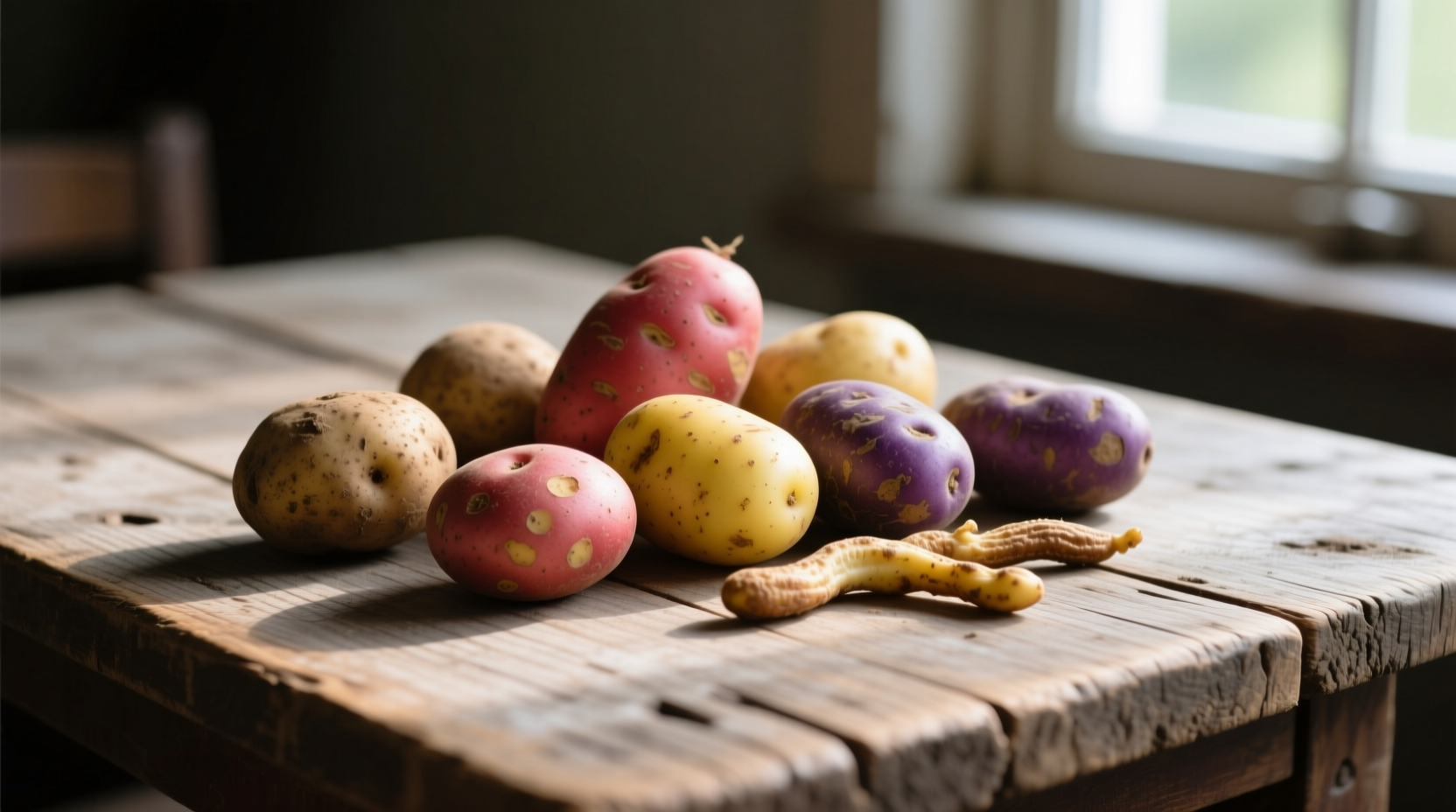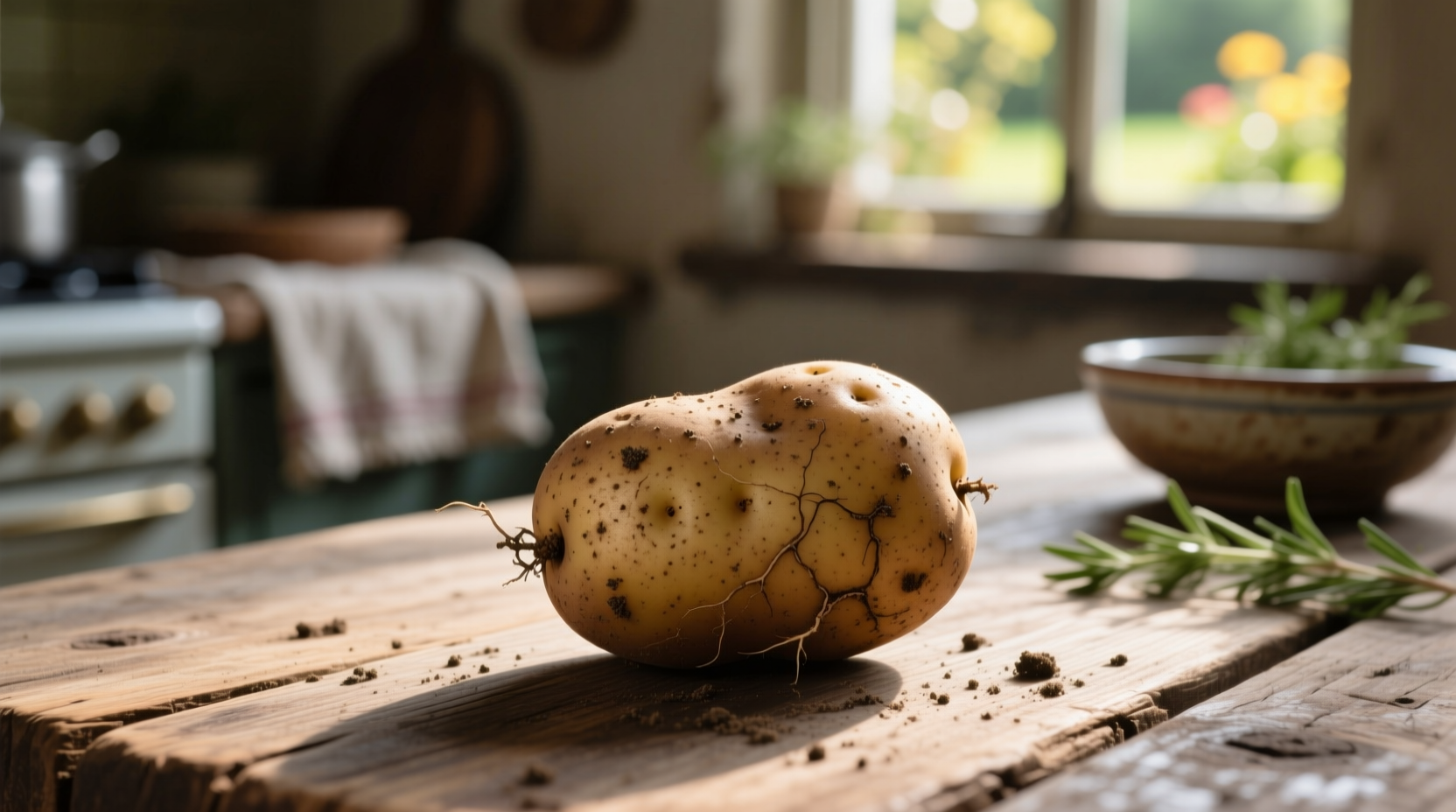Ever wondered why professional chefs reach for those tiny tubers at the farmers' market instead of standard russets? Small potatoes aren't just cute kitchen accessories—they represent a culinary secret weapon that transforms simple dishes into restaurant-quality creations. Understanding these compact powerhouses can elevate your cooking from ordinary to extraordinary with minimal effort.
What Exactly Qualifies as a Small Potato?
When we talk about small potatoes in culinary contexts, we're referring to two distinct categories: new potatoes harvested early in the growing season, and naturally small varieties that mature at a diminutive size. Unlike their larger counterparts, these compact tubers feature:
- Thin, delicate skins that don't require peeling
- Higher moisture content and lower starch levels
- A naturally waxy texture that holds shape during cooking
- A subtle, buttery flavor profile with earthy undertones
These characteristics make them fundamentally different from standard baking potatoes, requiring unique preparation approaches to maximize their culinary potential.
Small Potato Varieties Compared
| Variety | Size Range | Best Cooking Methods | Flavor Profile | Seasonality |
|---|---|---|---|---|
| Fingerling | 2-4 inches | Roasting, grilling | Nutty, complex | Summer-fall |
| New Potatoes | 1-2.5 inches | Boiling, steaming | Delicate, buttery | Early summer |
| Ladyfinger | 1.5-3 inches | Sautéing, salads | Sweet, earthy | Late spring |
| French Breakfast | 2-3 inches | Roasting, gratins | Creamy, mild | Year-round |
This comparison reveals why professional chefs carefully select specific small potato varieties for different applications. According to agricultural research from the International Potato Center, fingerling varieties contain up to 25% more complex carbohydrates than standard potatoes, contributing to their distinctive texture and slower digestion rate (cip.cgiar.org).
When Small Potatoes Shine: Culinary Applications
Understanding the unique properties of small potatoes helps determine their ideal applications. Their naturally waxy texture makes them perfect for dishes where maintaining structural integrity matters most:
Perfect for Roasting
Small potatoes develop exceptional crispness when roasted whole. Their high surface-area-to-volume ratio creates maximum caramelization while the interior remains creamy. Professional chefs recommend tossing them in duck fat at 425°F (220°C) for 35-40 minutes for optimal results.
Ideal for Salads
Unlike starchy potatoes that turn mushy, small potatoes hold their shape beautifully in salads. Chefs preparing potato salad for high-end restaurants typically use fingerlings cut in half, boiled until just tender, then dressed while warm to absorb flavors.
Superior for Gratinés
The thin skins and consistent size of small potatoes create elegant, uniform layers in gratin dishes. French culinary institutes teach that small potatoes require 25% less cooking time than larger varieties in gratin preparations, preventing overcooking while ensuring thorough heating.

Selection and Storage Guide
Choosing quality small potatoes requires attention to specific indicators:
- Skin texture: Should be smooth and taut, not shriveled or cracked
- Firmness: Should feel solid with no soft spots
- Eyes: Minimal sprouting indicates freshness
- Soil residue: Some dirt is normal for new potatoes; excessive mud suggests improper washing
Store small potatoes in a cool, dark place with good ventilation—never in plastic bags which trap moisture. Unlike larger potatoes, small varieties have thinner skins and higher moisture content, making them more perishable. The University of California Cooperative Extension recommends using small potatoes within 1-2 weeks for optimal flavor and texture (ucanr.edu).
Small Potatoes Through History
The culinary journey of small potatoes reveals fascinating agricultural evolution:
- Pre-16th century: Andean civilizations cultivated hundreds of native potato varieties, many naturally small
- 18th century: European aristocracy prized small potatoes as delicacies, serving them peeled and buttered
- Early 20th century: Commercial agriculture favored larger, uniform potatoes for easier processing
- 1980s-present: Chef-driven farm-to-table movement revived interest in heirloom small potato varieties
This historical shift explains why small potatoes disappeared from mainstream markets only to reemerge as gourmet ingredients. Culinary anthropologists note that traditional Andean communities still prefer small native varieties for their complex flavors and cultural significance (fao.org).
Common Small Potato Mistakes to Avoid
Even experienced home cooks make these critical errors with small potatoes:
- Peeling unnecessarily: The thin skins contain valuable nutrients and texture
- Overcooking: Small potatoes cook faster—check for doneness 10 minutes earlier than recipes suggest
- Cutting before cooking: Whole cooking preserves texture and flavor
- Using starchy potato methods: Boiling small potatoes in salted water (not starting in cold water) prevents waterlogging
Nutritional Advantages of Small Potatoes
Contrary to popular belief, small potatoes offer distinct nutritional benefits:
- Higher concentration of potassium per serving than bananas
- Rich in vitamin B6 and vitamin C (especially when cooked with skins)
- Lower glycemic index than standard baking potatoes
- Contain resistant starch that supports gut health when cooled after cooking
Nutrition researchers at Harvard T.H. Chan School of Public Health note that small potatoes' higher moisture content means you get more volume for fewer calories compared to larger varieties (hsph.harvard.edu).
Simple Preparation Methods for Maximum Flavor
You don't need complex recipes to showcase small potatoes. Try these professional techniques:
- Herb-Infused Roasting: Toss whole small potatoes with fresh rosemary, thyme, and garlic before roasting
- Lemon-Pepper Steaming: Steam with lemon slices and cracked pepper for a bright, clean flavor
- Mustard Vinaigrette Toss: After boiling, toss with whole-grain mustard and shallot vinaigrette while warm
- Cast Iron Searing: Parboil, then sear in hot cast iron with duck fat for restaurant-style crispness
These methods highlight why culinary professionals consider small potatoes worth the premium price—they deliver restaurant-quality results with minimal effort when prepared correctly.
Frequently Asked Questions
Can I substitute small potatoes for regular potatoes in recipes?
Yes, but with adjustments. Small potatoes work well in roasted or salad applications but aren't ideal for mashed potatoes due to their lower starch content. When substituting, use equal volume rather than weight, and reduce cooking time by 15-20% to prevent overcooking.
Why are small potatoes more expensive than regular potatoes?
Small potatoes command higher prices due to lower yields per plant, more labor-intensive harvesting, and greater perishability. Specialty varieties like fingerlings require hand-harvesting to prevent damage, increasing production costs. Their premium pricing reflects these agricultural realities rather than just marketing.
Do small potatoes need to be peeled before cooking?
No, peeling is unnecessary and counterproductive. The thin skins of small potatoes contain valuable nutrients and contribute to texture. Simply scrub them gently with a vegetable brush. Peeling removes up to 20% of the fiber content and diminishes the visual appeal that makes small potatoes desirable in the first place.
How can I tell if small potatoes have gone bad?
Fresh small potatoes should feel firm with smooth skin. Discard if you notice soft spots, significant sprouting (more than 1/4 inch), green discoloration (indicating solanine), or a musty odor. Unlike larger potatoes, small varieties deteriorate faster due to higher moisture content—when in doubt, throw them out as compromised texture affects dish quality significantly.
Are small potatoes healthier than regular potatoes?
Small potatoes offer comparable nutrition but with some advantages. Their higher moisture content means fewer calories per volume, and their waxy texture creates more resistant starch when cooled—beneficial for gut health. Both types provide similar vitamin and mineral profiles, but small potatoes' edible skins increase fiber intake. The healthiest preparation method matters more than potato size—roasting or steaming beats frying regardless of variety.











 浙公网安备
33010002000092号
浙公网安备
33010002000092号 浙B2-20120091-4
浙B2-20120091-4